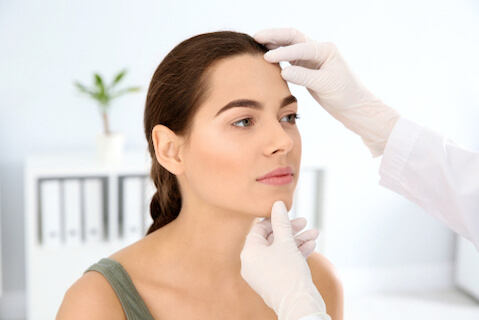
21 Facts About Skin Cancer & How to Avoid It
Beach weather is here, along with an increased risk for skin cancer. This is why May has been designated Skin Cancer Awareness Month, and why our dermatologists in Jupiter at Genesis Dermatology want to share some facts you may not know about skin cancer, along with ways to avoid it.
Statistics
- Cancer of the skin is the most common form of cancer in the United States.
- It’s also the most preventable form of cancer.
- According to the American Academy of Dermatology (AAD), three people die every hour from skin cancer in the U.S.
- Nearly five million people are treated for skin cancer every year in the United States.
- The American Cancer Society (ACS) estimates that this year 99,780 Americans will be diagnosed with malignant melanoma (the most deadly type), and approximately 7,650 of them will die from it.
- It is estimated that 40 to 50 percent of fair-skinned people who reach age 65 will develop at least one skin cancer, but those with darker skin are also susceptible.
Types of skin cancer
- Basal cell carcinoma is the most common form of skin cancer, followed by squamous cell carcinoma.
- Both can easily be cured if caught in time, but they can be disfiguring and expensive to treat.
- Malignant melanoma is the most deadly type of skin cancer.
- It represents only about three percent of all skin cancers diagnosed, but is responsible for the most deaths.
- That’s because of its tendency to spread to other parts of the body, including vital organs.
The primary cause
- The most preventable cause of skin cancer is exposure to ultraviolet (UV) light, either from the sun or from artificial sources like tanning beds.
- About 90 percent of non-melanoma skin cancers and 85 percent of melanoma cases are associated with exposure to UV radiation.
- UVA light has a longer wavelength, penetrates more deeply into the skin, and causes skin aging as well as some types of skin cancers.
- UVB light has a shorter wavelength, and causes skin burning. It is also responsible for most skin cancers, including malignant melanoma.
Surprising facts
- One bad sunburn in childhood doubles the risk for melanoma later in life.
- The sun’s UV rays can damage unprotected skin in as little as 15 minutes.
- The UV light from tanning beds is just as dangerous as sunlight.
- There is no known level of UV exposure that can increase vitamin D levels without also increasing skin cancer risk. (Sufficient vitamin D can be obtained safely through food and dietary supplements without the risks associated with overexposure to UV radiation.)
- Even if it’s cool and cloudy, you still need protection.
- UV rays can penetrate glass in windows, both at home and in the car.
How to spot it
Skin cancer is the only cancer you can see, according to the Skin Cancer Foundation (SCF), yet it often goes undetected in the early stages.
It’s important to know what to look for because if caught early, skin cancer can be cured.
When checking for possible skin cancers, any new growth on the skin should be investigated. So should a sore that doesn’t heal, or a smooth, shiny, or pearly-looking bump.
The Centers for Disease Control and Prevention (CDC) offers this quick alphabet guide on what to look for.
A = “asymmetrical.” Does the mole or spot have an irregular shape with two parts that look very different from each other?
B = “border.” Is the border of the mole or spot irregular or jagged?
C = “color.” Is the color uneven?
D = “diameter.” Is the mole or spot larger than the size of a pea?
E = “evolving.” Has the mole or spot changed during the past few weeks or months?
How to avoid it
An AAD survey released last month found that most Americans say sun protection is more important now than five years ago, yet many misunderstand how to protect themselves.
To do so, the AAD recommends these steps.
- Seek shade. The sun’s rays are strongest between 10 a.m. and 2 p.m. If your shadow appears to be shorter than you are, stay in the shade as much as possible.
- Wear sun-protective clothing, such as a lightweight long-sleeved shirt, pants, a wide-brimmed hat, and sunglasses with UV protection. For more effective protection, choose clothing with an ultraviolet protection factor (UPF) number on the label.
- Apply a broad-spectrum, water-resistant sunscreen with an SPF of 30 or higher to all skin not covered by clothing. Broad-spectrum sunscreen provides protection from both UVA and UVB rays.
“As we head into the summer, it’s important that the public practices safe sun to reduce their risk of skin cancer,” says board-certified dermatologist Mark D. Kaufmann, M.D., FAAD, and president of the AAD.
“There is no such thing as a safe tan,” he adds. “If you have any questions about how to protect yourself from the sun or notice new or suspicious spots on your skin or any spots that are changing, itching, or bleeding, make an appointment to see a board-certified dermatologist.”

